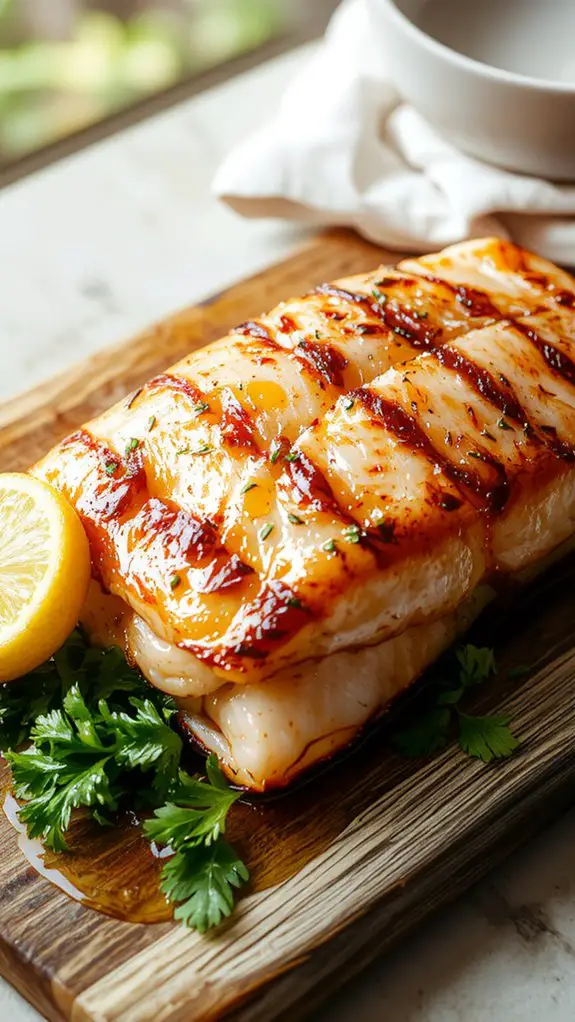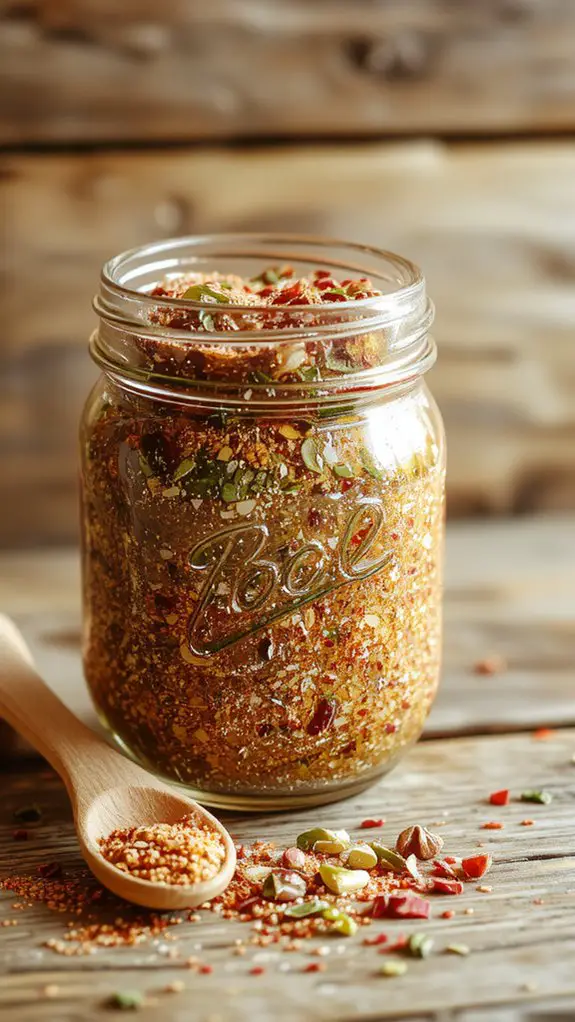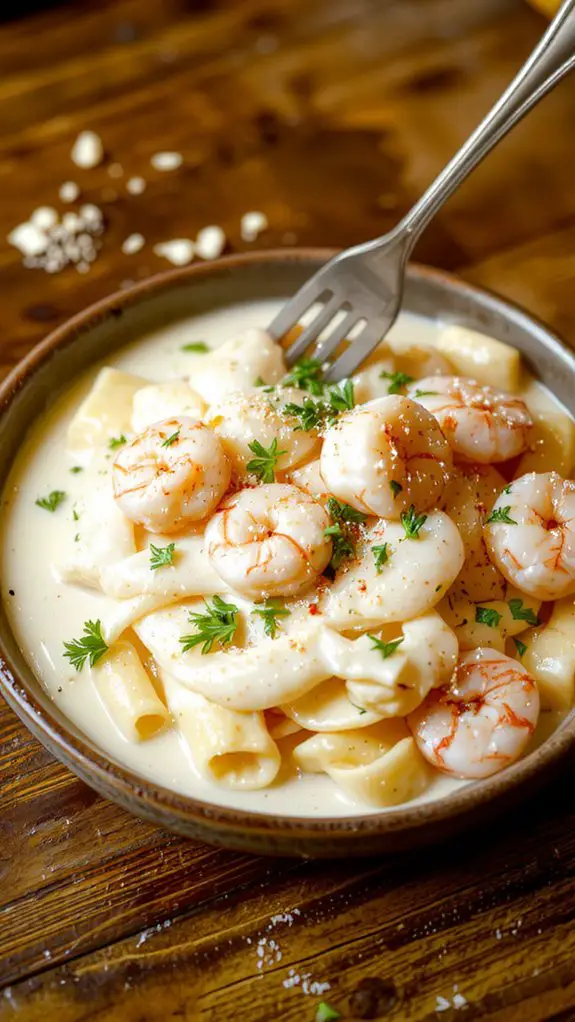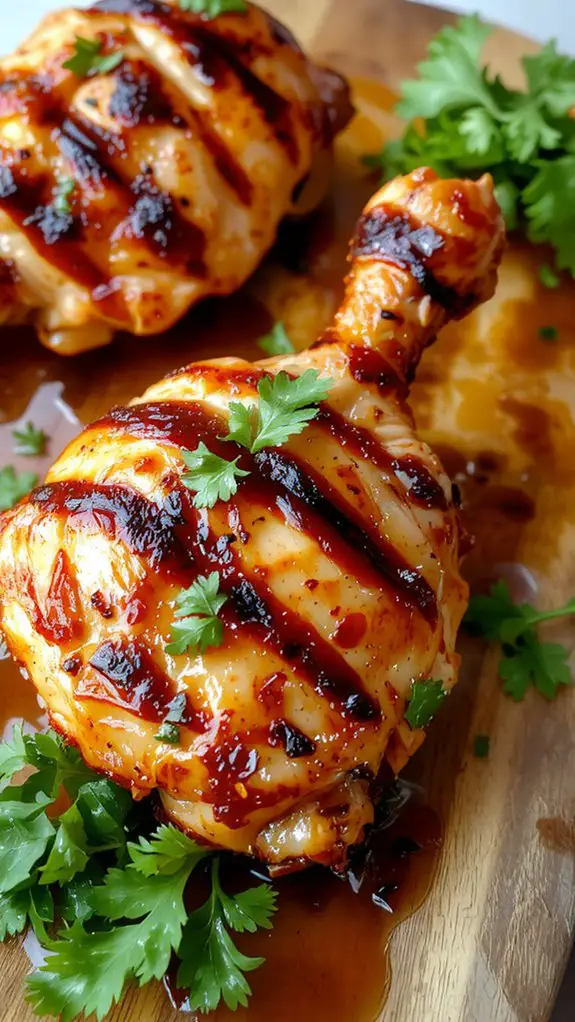Recipe
This Mahi Mahi recipe is a game-changer—trust me, it’s the best way to cook this versatile fish, and I’ve made it countless times to perfection.
What makes it special? A simple marinade of fresh lemon juice, garlic, and herbs that lets the natural, buttery flavor of Mahi Mahi shine.
Growing up near the coast, I learned early on that seafood doesn’t need to be complicated to taste incredible, and this dish proves it.
Imagine tender, flaky fillets with a golden sear on the outside, infused with bright citrus and aromatic herbs. It’s light yet satisfying, and the kind of meal that makes you feel like a chef without breaking a sweat.
Whether you’re a seafood pro or just dipping your toes in, this recipe is foolproof and absolutely worth making tonight. Let’s get cooking!
Ingredients
When it comes to making the perfect Mahi Mahi, the quality and freshness of your ingredients can make or break the dish. Start with high-quality wild-caught Mahi Mahi for the best flavor—trust me, it’s worth the splurge.
From there, keep it simple with a handful of fresh, vibrant ingredients that enhance the natural sweetness of the fish. Here’s what you’ll need:
- Mahi Mahi fillets (about 6 oz each, skin-on or skinless) – Fresh is ideal, but frozen works in a pinch (just thaw thoroughly).
- Extra-virgin olive oil – This adds richness and helps the seasoning stick.
- Sea salt and freshly ground black pepper – Essential for seasoning the fish perfectly.
- Garlic cloves (minced) – A must for that savory depth. Fresh garlic beats powdered any day.
- Fresh lemon (halved) – Brightens the dish with acidity; zest it for extra flavor if you’re feeling fancy.
- Butter (optional, but highly recommended) – Adds a luxurious finish; unsalted is best for control over saltiness.
- Fresh parsley (chopped) – A vibrant garnish that adds freshness and color.
- Optional additions:
- Paprika or chili powder for a smoky kick.
- Capers for a briny, tangy twist.
- White wine (for deglazing the pan) – a chef’s secret for amplifying flavor.
Pro tip: Room-temperature fish cooks more evenly, so pull it out of the fridge 15-20 minutes before cooking.
And don’t skimp on the lemon—its acidity balances the richness of the Mahi Mahi beautifully.
How to Make the Best Grilled Mahi Mahi Recipe
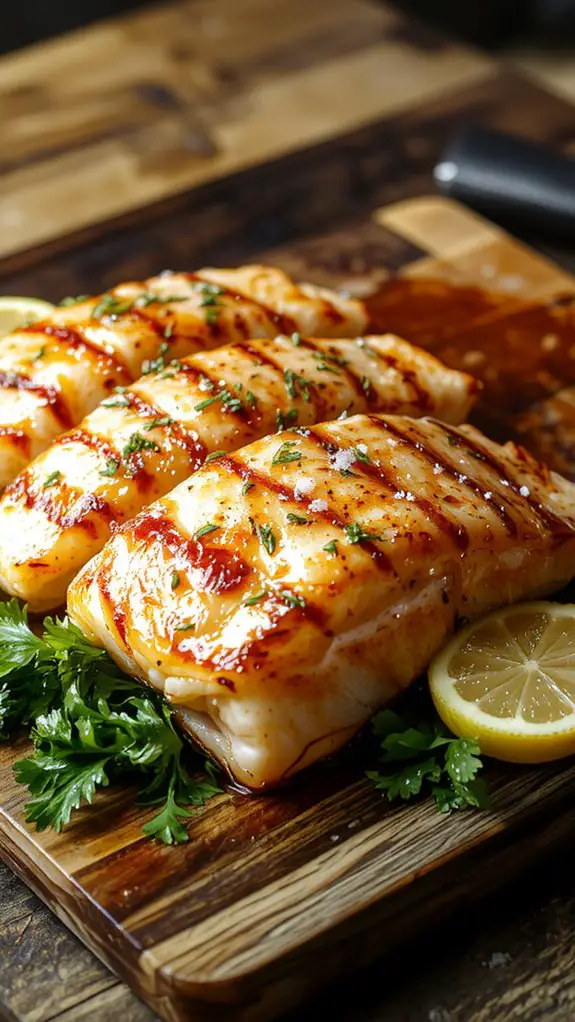
- Resist the urge to move the fish too soon – Let it sear for at least 3-4 minutes before flipping. If it sticks, it’s not ready—give it another minute.
- Check for doneness with a fork – The fish should flake easily and reach 145°F internally. Overcooked mahi mahi turns dry, so keep an eye on it.
- Let rest for 2-3 minutes off the grill – This allows the juices to redistribute. Cutting in too soon means losing all that flavor.
- Serve with a squeeze of fresh lemon or lime – Bright acidity balances the richness.
Bonus: Add a sprinkle of fresh herbs like cilantro or parsley.
Pro Tip: If using skin-on fillets, grill skin-side down first for crispiness. No flipping needed—the skin protects the flesh from drying out.
Watch Out: Mahi mahi cooks fast! Set a timer to avoid overcooking. Thin fillets? Reduce grill time by 1-2 minutes per side.
Nutrition
This Mahi Mahi recipe is both delicious and packed with essential nutrients. Below is the detailed nutritional information per serving.
| Nutrient | Amount per serving |
|---|---|
| Calories | 220 kcal |
| Protein | 29 g |
| Fat | 10 g |
| Saturated Fat | 2 g |
| Carbohydrates | 0 g |
| Sugars | 0 g |
| Fiber | 0 g |
| Cholesterol | 85 mg |
| Sodium | 280 mg |
Chef Tips
To get the best flavor and texture from your mahi mahi, I recommend patting the fillets dry before seasoning them.
Use high heat for searing to create a crispy crust while keeping the inside tender. Don’t overcrowd the pan—this guarantees even cooking.
For seasoning, keep it simple: salt, pepper, and a squeeze of fresh lemon enhance the fish’s natural taste without overpowering it.
Frequently Asked Questions
Can I Use Frozen Mahi Mahi for This Recipe?
Yes, I can use frozen mahi mahi; it works well. I’ll thaw it in the fridge overnight or run it under cold water before cooking. Just pat it dry to remove excess moisture for better results.
How Do I Know if the Mahi Mahi Is Fresh?
I look for clear, bright eyes and shiny, firm flesh that springs back when pressed. Fresh mahi mahi should smell clean, like the ocean, not fishy. If it’s slimy or discolored, I avoid it.
What Sides Pair Well With Grilled Mahi Mahi?
I’d pair grilled mahi mahi with citrusy quinoa, roasted asparagus, or a mango avocado salad. Grilled pineapple or coconut rice also work great—they complement the fish’s mild, slightly sweet flavor without overpowering it.
Can I Substitute Mahi Mahi With Another Fish?
I can substitute mahi mahi with similar firm, mild-flavored fish like halibut, cod, or swordfish. They’ll hold up to grilling and absorb seasonings well. I’d avoid delicate fish that might fall apart when cooked.
How Long Can I Store Leftover Mahi Mahi?
I can store leftover mahi mahi in the fridge for up to 3 days if it’s properly sealed. If I freeze it, it’ll last about 2-3 months, but I know the texture might change a bit.

